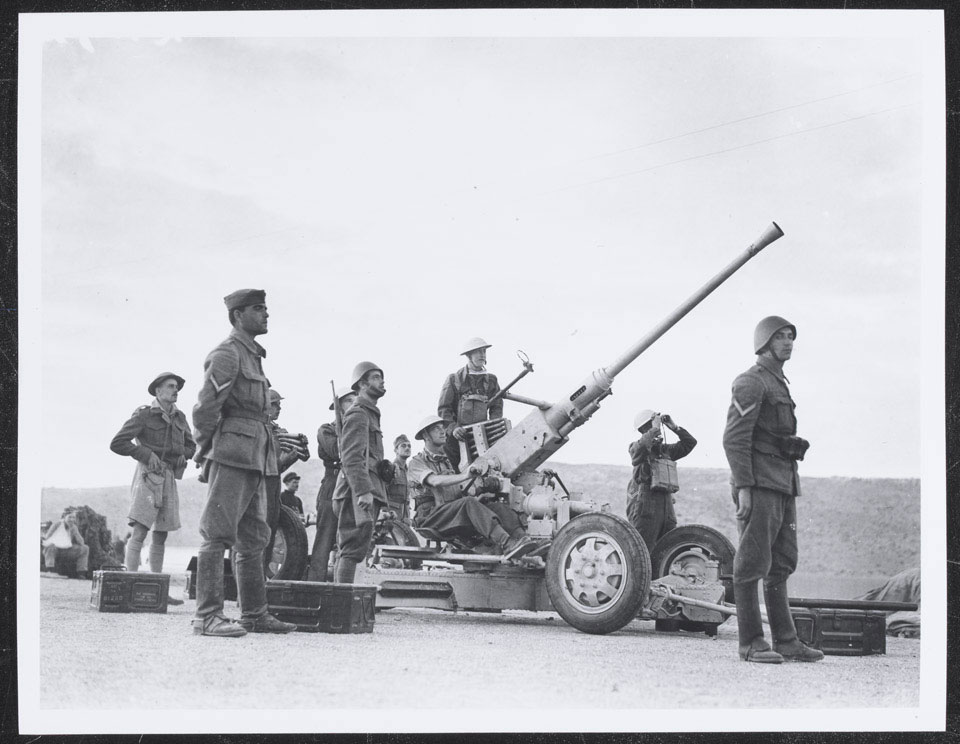
Online Collection
« Prev - 1 of 1 results - Next »
Greek and British soldiers man an anti-aircraft gun, 1941
Photograph, World War Two, Balkans (1941-1945), 1941
.
On 6 April 1941, the German Army, supported by Hungarian and Bulgarian forces, attacked Yugoslavia and Greece. Hitler launched the assault in order to overthrow the recently established pro-Allied government in Yugoslavia and to support the stalling Italian invasion of Greece (launched in October 1940).
Although the British were fully stretched fighting in North Africa, they had dispatched 58,000 Commonwealth troops to assist the Greeks in March 1941. This force, commanded by General Henry Maitland Wilson, included 1st Armoured Brigade, 6th Australian Division and 2nd New Zealand Division.
Despite the brave resistance of the Greek and Commonwealth troops, the speed of the German 'Blitzkrieg' overwhelmed their defensive positions. The Germans quickly captured the southern Greek cities and the struggle ended with the fall of Athens on 27 April 1941. The Allied lost around a quarter of their strength, including 11,000 men captured. Nevertheless, about 45,000 Allied soldiers were successfully evacuated to Crete.
One of 66 official photographs, showing the evacuation from Greece, the battle for Crete and its aftermath, April-November 1941.
NAM Accession Number
NAM. 1992-04-238-17
Copyright/Ownership
National Army Museum, Out of Copyright
Location
National Army Museum, Study collection
Object URL
https://collection.nam.ac.uk/detail.php?acc=1992-04-238-17

